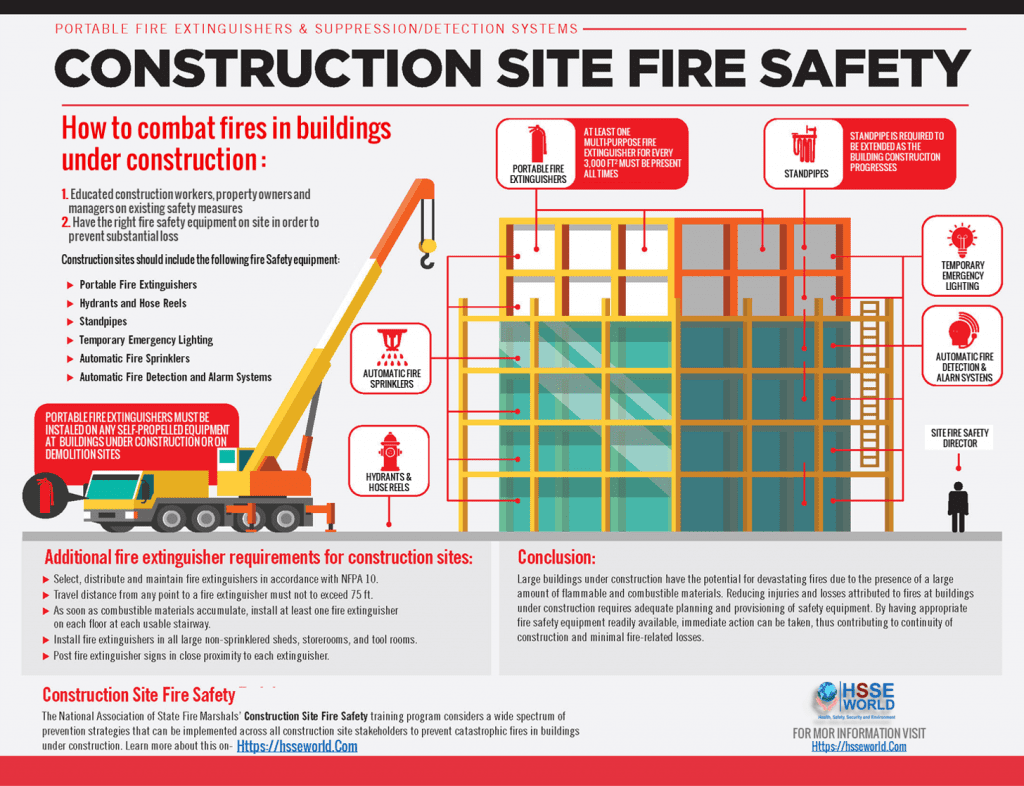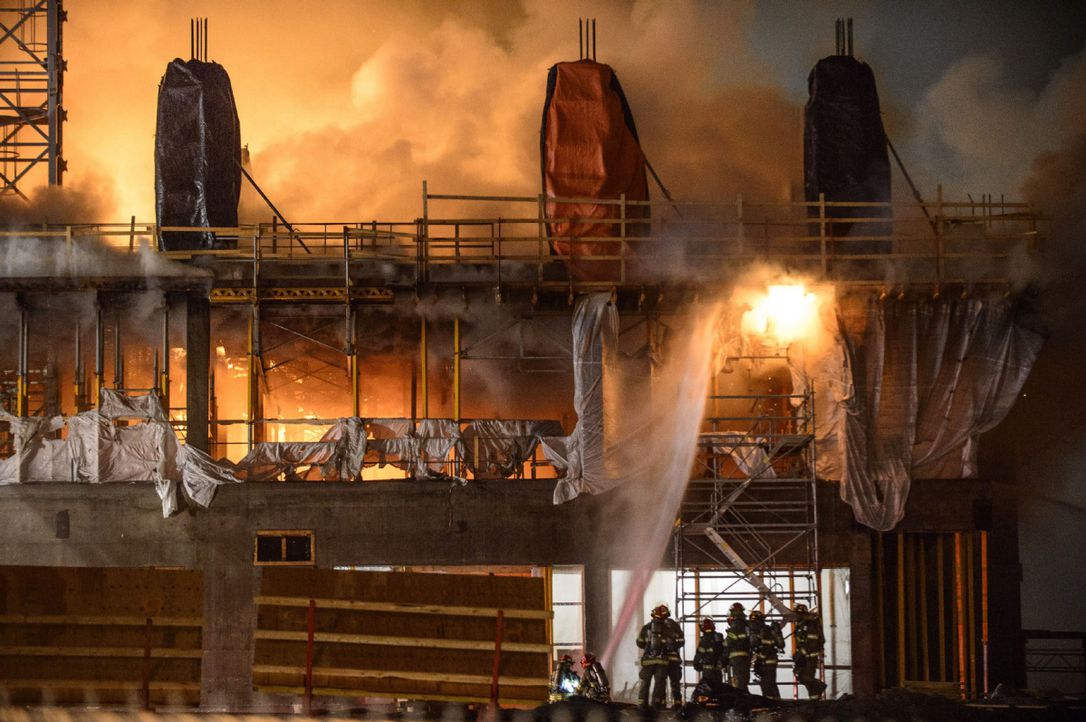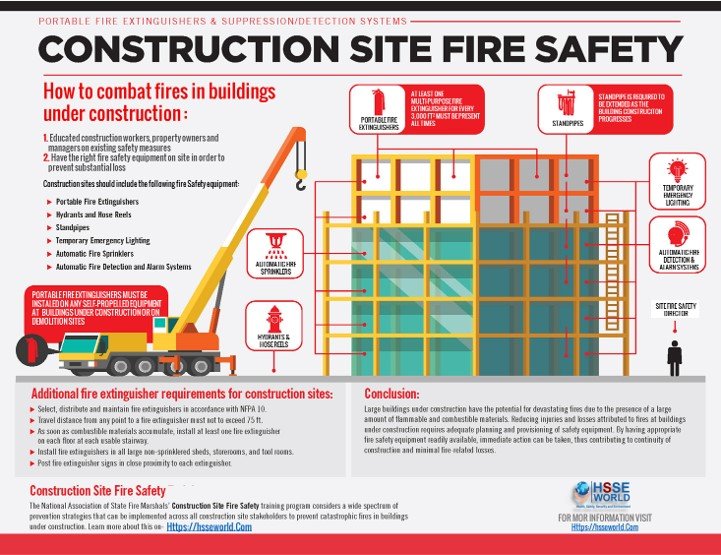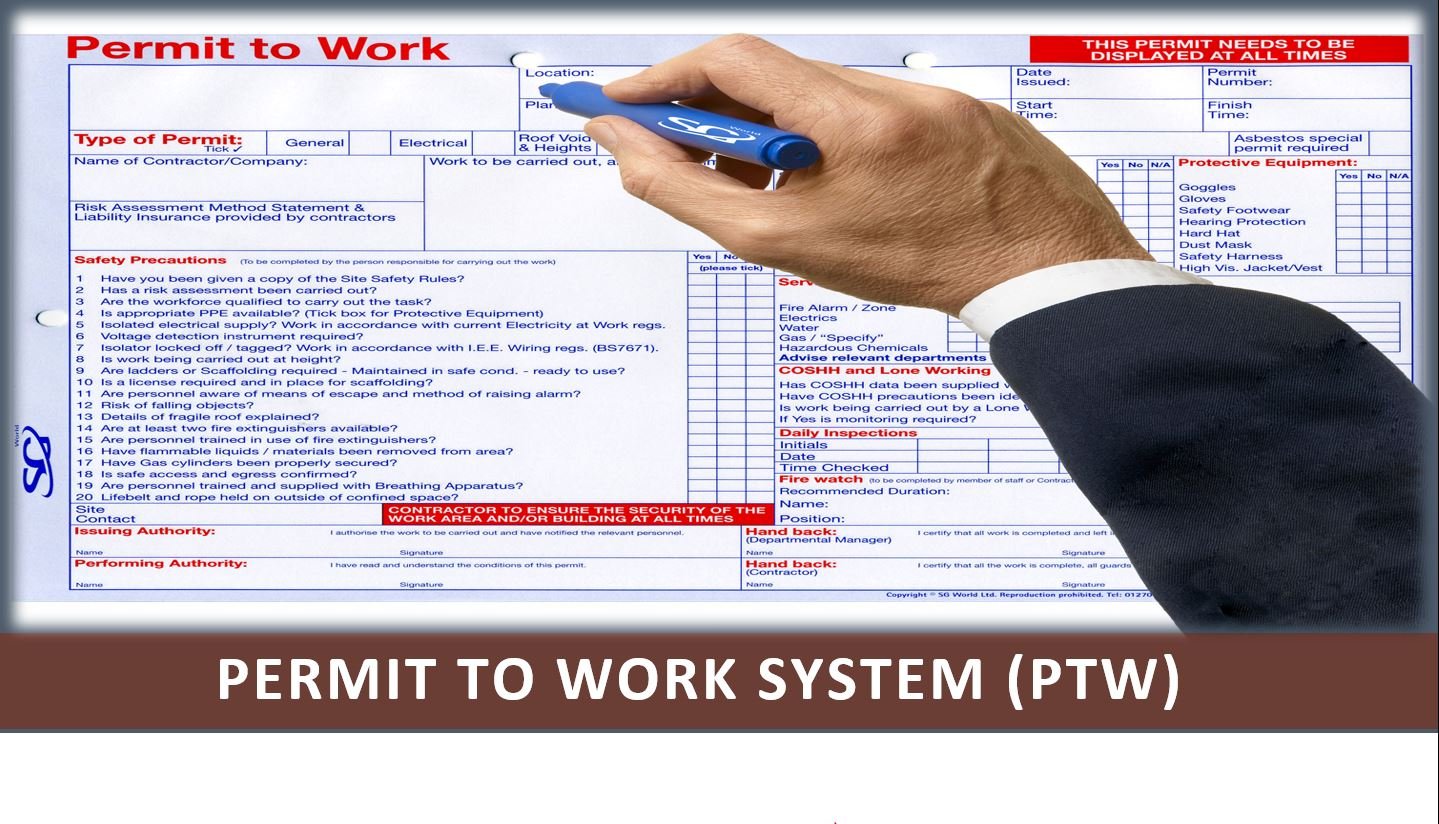The combination of hazardous activities, such as hot work, large quantities of fuel, flammable liquids, wood, liquefied gas (LPG), and potential issues with escape mean that construction sites pose a very real fire risk. A fire on a construction site not only puts the lives of workers at risk but can also cause damage to the site and the surrounding area as well as being financially devastating for businesses.
Fires can and do kill, injure and cause serious human suffering and financial loss. The potential dangers are particularly severe on many construction sites, where high-risk activities such as hot work are frequently combined with circumstances where fires can spread quickly and escape may be difficult. In the photo of today, we will speak about preventing fires from starting and ensuring people’s safety if they do.

The presence of combustible waste materials, solvents, hot works processes, and unfinished electrical systems. There is also an amplified risk of destruction, trespass, and malicious acts.
The nature of the incomplete building and the storage of building materials on site which are often combustible surges the damage caused once a fire does take hold, and can also pose bigger risks to fire and rescue teams.
Fire risk assessment
Most construction site fires have simple causes and can be dealt with by simple precautions. The legislation requires that whoever is in control of the construction work must have carried out a risk assessment and be able to demonstrate that they have:
- Identified the risks in their workplaces.
- Considered who will be affected.
- Assessed the extent of the risks.
- Identified measures to reduce, or remove the risk.
- Put in place those measures.
Emergency plans
Every construction site, no matter how small or low risk, should have an emergency plan. In finished buildings, there will always be alternative escape routes. However, when the building is under construction this may not be the case and a fire on a construction site can trap people. The purpose of an emergency plan is to make sure everyone on the site can reach safety in the event of a fire.
The plan should:
- Be prepared before the work starts.
- Be regularly updated and appropriate for the work being carried out.
- Detail individual’s responsibilities during a fire.
- Where Construction (Design and Management) Regulations 2007 (CDM) apply to be incorporated in the construction phase health and safety plan. ( Know more:e-books-fire-engineering-and-emergency-planning/)
Fire warning systems
A fire warning system will alert people to a fire on the site, allowing them to escape safely and quickly. On a small low-risk site shouting, ‘fire’ may be enough to raise the alarm. On a larger or high-risk site, it may be appropriate to have a manual bell or battery-operated site alarm with a distinctive sound that can be heard above the noise of the site. The fire alarms should be tested at least once a week.
Fire fighting equipment
Carrying out a risk assessment on the site will identify the hazards and the type of equipment required. On a small or low-risk site a single fire extinguisher may be sufficient. On a large or high-risk site, it may be necessary to install a fixed system such as fire sprinklers.
Whatever the equipment needed on the site, it is important that:
- Fire equipment is located close to work areas and is easily accessible.
- The correct extinguishers are chosen.
- Extinguishers are serviced and in good working order.
- Everyone on the site is trained in basic firefighting techniques.
(Read more:E-books-fire-safety-equipment-guidelines/)

Fire prevention must for that reason be a top main concern when planning and managing construction work. Construction sites are at an amplified hazard of fire owing to a range of factors.
Here are 13 top tips for fire prevention on the site:
- Plan chosen areas for waste with fire and emergency procedures in place to curb and deal with a fire should it break out.
- Clear away rubbish and waste frequently to the chosen areas. Don’t let waste materials build up around the site.
- Never try to dispose of rubbish by burning it. Site ‘bonfires’ are prohibited and can get out of control easily.
- Electrical systems, comprising short-term supplies, must only be installed by a skilled electrician and must be frequently maintained.
- Site compounds are susceptible to fire because of: temporary heaters, smoking, intermittent occupation, clothes drying, waste packaging, old newspapers, etc. Additional checks should be in position prior to leaving the site compound.
- Short-term heaters must be appropriately installed in a safe position and have guards fixed. Heaters should not be left unoccupied.
- High-intensity lights should not be hidden or placed near flammable material. They must be firmly fixed to stop them from falling over. Treat them as though they are heaters.
- Do not smoke in areas of high fire risk or chosen ‘no smoking’ areas. Dispose of matches and cigarette butts cautiously.
- Control all hot works by a permit to work system to make certain that risks are effectively controlled.
- Before beginning hot works make sure the nearby region is free of flammable material. Non-removable items must be covered with heat-proof blankets. Don’t underrate how far radiant heat and sparks can travel.
- Stop hot work at least 1 hour before the end of the shift, with fire checks at 30-minute interludes and up to and as well as 1 hour after the conclusion of the work.
Always have suitable fire extinguishers readily to hand and a fire and emergency plan in place. Ensure this forms part of the induction procedure for all site operatives
Ensure that everyone knows their part in the fire safety plan. Know where extinguishers are and how to use them. Know the evacuation procedure and escape routes.
Download the Infographic
Photo of the day: Construction Site Fire safety
More photos:
- What are the Best Practices for Managing Subcontractor Risk
- Photo of the day: 10 Essential Safety Tips for Driving in Hot Weather Conditions
- Photo of the day: best workplace safety tips
- Photo of the day: The Importance of Stop Work Authority in Maintaining Workplace Safety
- Photo of the day: Tomorrow’s Reward for Working Safely Today: Cultivating a Culture of Safety
- Photo of the day: Preventing slips and trips at work
- Photo of the day: Learn the DRSABCD action Plan
- Working with Electricity Electrical Accidents Guide for Electrical Workers
- Photo of the day: Hearing Protection Device Selection
- Photo of the day: If An Earthquake Shakes You-Infographic free
- Fire Safety Posters Free Download
- Photo of the day: First Aid for Electrical Burns-Infographic free
- Infographic: First Aid for Cuts and Scrapes free download
- Photo of The day: Work Safe with Lasers-Laser Safety free
- Photo of the day: Working Safely with chemicals and chemical Management
- Photo of the day: Safe work practices when using MEWPs ( updated)
- Photo of the day: Preventing Common Kitchen Hazards
- Photo of the day: Safe handling of Gas Cylinders and lecture bottles
- Photo of the day: Forklift Stability Triangle
- Photo of the day: Defective Tools Safe Work Practice
- Photo of the day: Lift With Your Legs Not With Your Back
- Photo of the day: First Aid for burns
- Photo of the day: The 7 Principles of HACCP
- Photo of the day: Working Safely with Suspended Loads
- Photo of the day: Heat Stroke First Aid and safety posters
- Photo of the day: Near-Miss Reporting and Posters
- Photo of the day: Ergonomic chair and office chair safety tips
- Photo of the day: Whole Body Vibration
- Photo of the day: Substation Safety Equipment
- Photo of the day: Bypassing Safety Controls Rules
- Photo of the day: Lightning Safety Tips
- Photo of the day: Overhead Power lines Clearance
- Photo of the day: Floor Marking
- Photo of the day: Types of Foot Protection
- Photo of the day: Types of Hand Protection
- Photo of the day: Lockout and Tagout Safety
- Photo of the day: Fall Protection Plans
- Photo of the day: Flood Safety Tips
- Photo of the day: Read All Labels Work safe
- Photo of the day: Run Project safely with Crane Hand Signals
- Photo of the day: Flagman and Traffic control
- Photo of the day: Managing Risks of Exposure to Solvents in the workplace
- Photo of the day: Scissor Lift Safety
- Photo of the day: HSE Bulletin Board
- Photo of the day: Arc-Fault Circuit Interrupters (AFCI)
- Photo of the day: Safe use of ladders and step ladders
- Photo of the day: Concrete Truck Driver Hand Signals
- Photo of the day: Extension Cord Safety Tips
- Photo of the day: Protect your Head
- Photo of the day: choosing the right Anchorage
- Photo of the day: Work-Related Asthma
- Photo of the day: Top FIVE Heavy Equipment Construction Site Safety Tips
- Photo of the day: sun safety in the workplace
- Photo of the day: Cannabis and Impairment in the Workplace
- Photo of the day: Position for safety and comfort-Safety Tips
- Photo of the day: Generator Safety
- Photo of the day: Controlling COVID-19 in the Workplace-Physical Barriers
- Photo of the day: Manual Material handling
- Photo of the day: Personal Protective Equipment last resort
- Photo of the day: WHMIS 2015 – Pictograms
- Photo of the day: Indoor Air Quality
- Photo of the day: Noise in the affected workplace
- Photo of the day: Fatigue at Work
- Photo of the day: Don’t be Driven to Distraction
- Photo of the day: working in heat and Humidex Rating
- How to use Plate Clamps Safely: Safety Moment#34
- Photo of the day: Sitting at work
- Photo of the day: 5 ways to reduce the risk of Slipping and Tripping
- Photo of the day: Preventing the spread of contagious illness
- Photo of the day: Incident Investigations
- Photo of the day: 10 Scaffold Safety Essentials
- Photo of the day: Effective Health and Safety Committees
- Photo of the day: New worker Orientation & Safety Orientation checklist
- Photo of the day: Workplace Inspection
- Photo of the day: musculoskeletal disorders
- Photo of the day: Emergency preparedness in the workplace
- Photo of the day: Mental health in the workplace
- Photo of the day: Trenching Safety Tips That Can Save a Life
- Photo of the day: Dangerous Goods Classes
- Photo of the day: Safety Equipment for Confined Spaces
- Photo of the day: Tips to reduce Heat stress in the workplace
- Photo of the day: hierarchy of controls
- Your steps to chemical safety
- H2S Gas and how to handle its Emergency
- Photo of the day: Importance of Mock drill and Fire Action Emergency Procedure
- Photo of the day: Choosing the Right Face Mask and the difference between a respirator and face mask
- Photo of the day: Confined space safety Precautions
- Breath Safely: The Proper Use of Respiratory Protection
- Photo of the day: Electric shock survival
- Photo of the day: Chemical Spill Emergency Response
- Photo of the day: Construction Site fire Safety
- Photo of the day: Confined Space rescue
- Photo of the day: Conveyors Safety Tips




